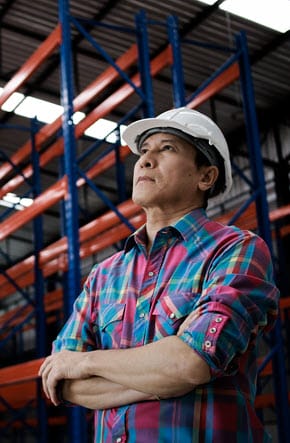Warehouse Package Scanning
Fast scanning and validation of incoming and outgoing packages with ParcelSCAN
Your browser is out of date, for the best web viewing experience visit Browse Happy to upgrade your browser today.
This introductory primer is provided to explain how warehouse drones are used and how they operate in warehouses and distribution centers. Consider this a “Warehouse Drones 101” on the features, benefits and even challenges of deploying drones in the warehouse. As original pioneers of using drones in the warehouse, contributors to this primer include warehouse professionals and aeronautic engineers who have spent thousands of hours flying warehouse drones and have collected enough data to provide a fully informed assessment and overview of this supply chain technology.
Warehouse drones are used to help enhance cycle counting activities in the warehouse. Inventory accuracy is a critical component to managing a warehouse, and historically is a very labor-intensive process. As fulfillment demands have increased, warehouses are forced to carry large amounts of inventory. Unfortunately, warehouses have limited footprints and instead of spreading out their operation, they have embraced high vertical storage shelves for their inventory. While this helps solve the storage challenges, this has impacted the ability for warehouse workers to satisfactorily cycle count inventory (which entails scanning stored goods). This was a driving factor in the introduction of warehouse drones as a means of scanning both high and low locations of stored goods.

Warehouse drones are capable of reaching the highest stored goods in the warehouse, keeping employees safe on the ground. But be careful, if a drone falls from heights over 30 feet and were to land on an employee, this could lead to serious injuries. At best (regardless of the technology provider), warehouse drones cannot sustain flights longer than 20 minutes due to battery life limitations. Once depleted, batteries are typically swapped out by warehouse workers. This manual activity reduces the “autonomous” promises of warehouse drones. Suppliers will suggest deploying multiple warehouse drones to ensure constant scanning. Managing these multiple warehouse drones requires additional manpower and training.

Warehouse drones are an advancement over hand scanning performed by workers (especially for higher shelves, which typically require scissor lifts). A warehouse drone can scan a 300-foot-long warehouse aisle in just over 5 hours. However, this time does not include the stoppages required for warehouse drones to be charged every 20 minutes. Equipped with their own onboard camera and lights, warehouse drones are typically used to scan one large LPN found on a pallet or large box stored in a warehouse rack. Because of weight limitations, a warehouse drone will only carry a single camera, which provides a limited field of view (typically no more than 12 inches). The small field of views require warehouse drones to slowly fly and hover in front of inventory to ensure barcodes are adequately captured.

To prevent injury to workers and damage to the warehouse drone, associates are required to clear aisles of fellow employees and equipment. As mentioned, warehouse drones are required to hover in place to adequately capture barcodes with their small field of views, this hovering creates drafts that inhale loose warehouse material (like shrink wrap or packing tape) into the drone rotors. See an example of this here. When this happens the warehouse drone will continue to try and break free of the material until its battery dies or a warehouse worker goes up to retrieve it.
The benefits and challenges of using warehouse drones are typically discovered after a month of use. Be cautious of committing to long term agreements without truly understanding how warehouse drones will interact with your specific warehouse environment. Solution providers should offer a limited time trial of the technology prior to asking warehouses to commit to multi-month or year contracts. Warehouses that continue to use the drone technology discover that it will likely improve cycle counting speeds and potentially reduce specific headcount. While the expectation is that warehouse drones will help reduce the number of employees, there are additional responsibilities and new duties that come with operating this technology. So, in most instances the warehouse workers will still need to remain on hand to change batteries, clean shelves, clear aisles and keep an eye on the warehouse drones.


Warehouses understand that automating cycle counting is an essential step in improving their inventory management. Many warehouses that have experience with warehouse drones have discovered a safer and faster cycle counting automation solution with the Vimaan StorTRACK. This computer vision solution includes a field of view 4X larger and a battery life of up to 8 hours (compared to 20 minutes for drones). Warehouse drones are intriguing and can serve as a demonstration of how warehouses are embracing innovation. As warehouses look for ways to improve results and reduce headcount, they will discover there are better automated cycle count options, such as StorTRACK.
Fast scanning and validation of incoming and outgoing packages with ParcelSCAN
Warehouses are capturing all 4 sides of pallets faster than ever before with PalletSCAN 360.
Distributors reliably scan all outgoing cases in seconds ensuring customer orders are correct before shipping